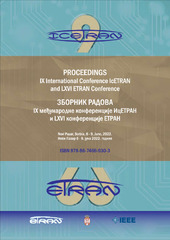Приказ основних података о документу
Gan-based data augmentation in the design of Cyber-attack detection methods
| dc.creator | Nedeljković, Dušan | |
| dc.creator | Jakovljević, Živana | |
| dc.date.accessioned | 2023-03-06T07:18:02Z | |
| dc.date.available | 2023-03-06T07:18:02Z | |
| dc.date.issued | 2022 | |
| dc.identifier.isbn | 978-86-7466-930-3 | |
| dc.identifier.uri | https://machinery.mas.bg.ac.rs/handle/123456789/5277 | |
| dc.description.abstract | The advent of the Industry 4.0 paradigm that relies on the concepts of Cyber-Physical Systems (CPS) and the Industrial Internet of Things (IIoT) leads to the transition from centralized to distributed control. In this approach, interconnected smart devices (sensors, actuators, etc.) as the key enablers achieve system control through coordinated work. Introduction of IIoT leads to ubiquitous communication between smart devices, thus opening up a vast area for potential malicious threats and attacks which can cause serious consequences, take to system dysfunction or even endanger human lives. Therefore, security mechanisms have to be developed to provide timely detection of different cyber-attacks and to keep the system safe and protected. Since industrial processes are often very complex and their analytical model is very difficult to determine, deep learning based methods for cyber-security mechanisms development are imposed as a technique of choice. Successful employment of data-driven solutions, particularly based on deep learning approaches usually requires a big amount of data. However, due to various limitations in the acquisition of data from the real process, its availability is still a major challenge. For instance, the Industry 4.0 factory implies frequent reconfiguration which reduces the time intervals available for experimental procedures such as data acquisition. One of the ways to deal with this issue is called data augmentation. In this paper, we apply data augmentation in the design of cyber-attack detection methods in Industrial Control Systems (ICS). In particular, we explore the possibilities for utilization of Generative Adversarial Networks (GAN) to generate the necessary amount of data for deep learning based modeling sing a relatively small number of available samples on input. | sr |
| dc.language.iso | en | sr |
| dc.publisher | ETRAN Society, Belgrade, Academic Mind, Belgrade | sr |
| dc.relation | info:eu-repo/grantAgreement/ScienceFundRS/AI/6523109/RS// | sr |
| dc.relation | info:eu-repo/grantAgreement/MESTD/Technological Development (TD or TR)/35004/RS// | sr |
| dc.rights | openAccess | sr |
| dc.source | 9th International Conference on Electrical, Electronic and Computing Engineering (IcETRAN 2022), Proceedings, Novi Pazar, June 2022, ROI1.4 | sr |
| dc.subject | Data augmentation | sr |
| dc.subject | Cyber security | sr |
| dc.subject | Generative Adversarial Networks | sr |
| dc.subject | Deep learning | sr |
| dc.subject | Convolutional Neural Networks | sr |
| dc.title | Gan-based data augmentation in the design of Cyber-attack detection methods | sr |
| dc.type | conferenceObject | sr |
| dc.rights.license | ARR | sr |
| dc.citation.rank | M33 | |
| dc.citation.spage | ROI1.4 | |
| dc.identifier.fulltext | http://machinery.mas.bg.ac.rs/bitstream/id/12789/dnedeljkovic_etran2022.pdf | |
| dc.identifier.rcub | https://hdl.handle.net/21.15107/rcub_machinery_5277 | |
| dc.type.version | publishedVersion | sr |


